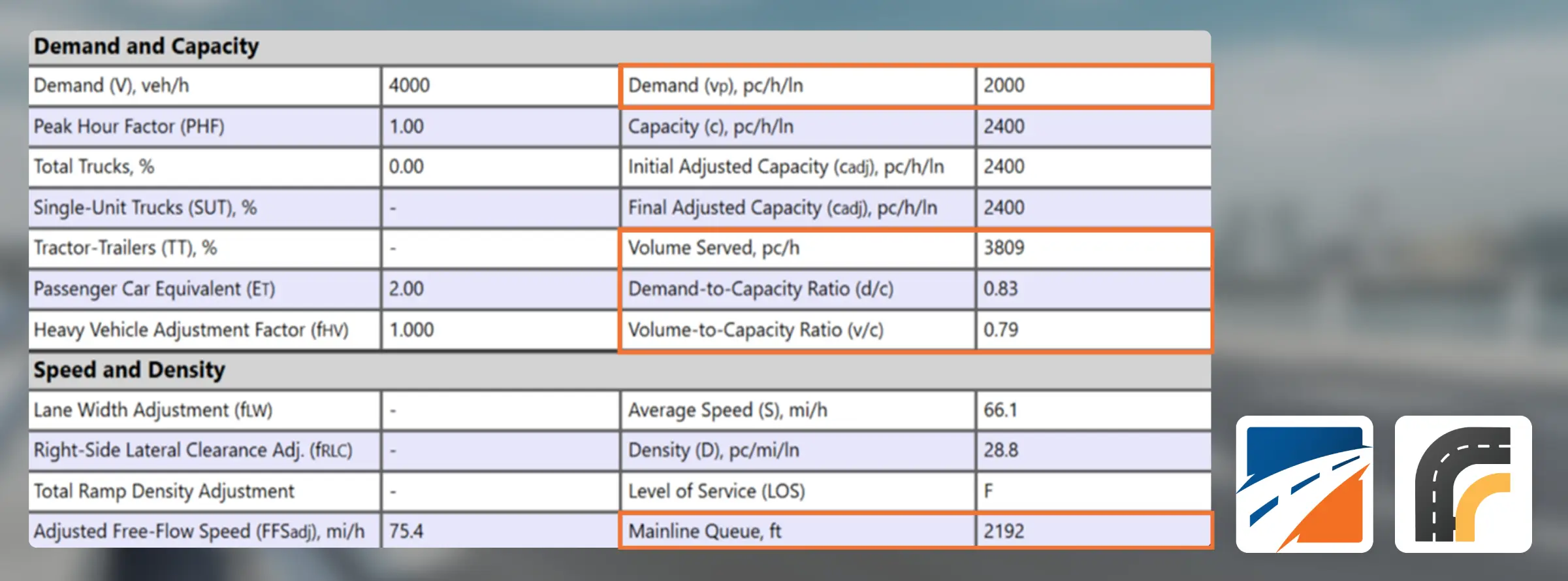Acceleration and deceleration lanes are crucial elements in freeway ramps, as they facilitate transitions in vehicle speeds entering or leaving a freeway. When modeling these elements in the HCM methods, the proper measurements must be taken on the field or design plans, and these inputs must be properly entered into HCS.
For proper design guidance, refer to the AASHTO “Green Book” or check with your state DOT for local policies.
How do acceleration and deceleration lanes affect highway capacity?
Longer acceleration and deceleration lanes lessen turbulence as ramp vehicles enter or leave the freeway. This leads to lower densities and higher speeds in the ramp influence area. However, It is important to remember that longer acceleration or deceleration lanes do not increase capacity per the current HCM 7th Edition methods.
Additionally, this article does not cover the cases of lane additions or lane drops, which can effectively add additional capacity to merge and diverge segments.

Sensitivity of merge speeds to acceleration lane length (Source: HCM 7th Edition, Exhibit 14-23)
Measuring acceleration and deceleration lanes (single-lane ramp)
As shown below, HCM Exhibit 14-5 provides guidance on measuring acceleration and deceleration lanes. Acceleration/deceleration lanes must be measured from the gore point to the end of the taper, whether the lanes have a parallel or tapered design.

Measuring length of acceleration/deceleration lanes (Source: HCM 7th Edition, Exhibit 14-5)
Measuring acceleration and deceleration lanes (two-lane ramp)
Two-lane ramps typically improve operations in merge and diverge segments, handling higher ramp flows more efficiently at a lower density. For these segment types, two separate acceleration or deceleration lanes may exist, as shown in the figure below:

Measuring multiple acceleration/deceleration lanes in two-lane ramps (Source: HCM 7th Edition, Exhibits 14-6 and 14-7)
When modeling two-lane ramps in HCS, select the number of ramp lanes as “2”. Then, two different acceleration and deceleration lane lengths will be enabled:

HCS - Measuring multiple acceleration/deceleration lanes in two-lane ramps
Modeling diverge segments with option lanes
A special case of two-lane off-ramps includes the present of option lane, a geometric feature that provides operational flexibility.

Freeway exit with option lane (Source: Manual on Uniform Traffic Control Devices 2009)
For these cases, this diverge segment can be modeled as a single deceleration lane with a length LD.
To model this in HCS, simply enter LD1 = 0 and LD2 = LD

Measuring length of deceleration lanes with the presence of option lanes (Source: HCM 7th Edition, Exhibit 14-17)




